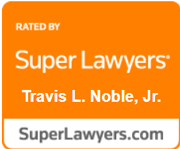Voir Dire
One of the most critical portions of a jury trial is the selection of the jury during voir dire. It is your opportunity to introduce your client to the potential jurors and tell their life story. It is necessary to paint a visual picture of who your client is by describing their family and employment. It is also an opportunity for the lawyer to establish a relationship with the potential jurors. Voir dire permits a party to establish a relation, if not a bond of trust with the jurors. This relationship continues throughout the entire trial Powers v. Ohio, 111 S. Ct. 1364, 1371-72.
Communicate the theory of your defense in voir dire. Start selling the theory of the case by asking jurors questions that will force them to think about your client and the case from an emotional perspective. Intertwine your theory with the specific facts and law in your case. The voir dire phase of the trial is the juror’s first introduction to the substantive factual and legal issues in a case. Gomez v. United States, 490 U.S. 874 (1989). Jurors start to make initial impressions about the case, the client and the lawyer.
Break your voir dire up into chapters.
1. Presumption of innocence
Explain to the panel that as your client sits there, he /she is not guilty. It is not until the state has presented enough evidence that convinces you that there is a finding of guilt. Because of that presumption, the defendant is not required to present any evidence including his/her own testimony. Ask one of the venire persons, explaining that they have not heard any evidence up to this point, if they had to vote right now could they cast a vote? It is amazing how often they will say they cannot give you a verdict having not hearing any evidence. Respectfully explain that in fact they must vote not guilty because of the presumption.
2. Nature of the charges
In addition to selling the prospective jurors your side of the case, you want to be aware of their possible biases or prejudices. Inquire about membership in organizations such as Mothers Against Drunk Driving, Students Against Drunk Driving, and whether or not alcohol consumption is against their religious or moral beliefs. Ask if anyone believes zero tolerance is the standard. Explain that it’s not against the law to consume alcohol and then drive an automobile. It only becomes illegal if enough alcohol was consumed so that their physical and mental faculties are affected. Inquire as to the signs they would look for to determine if a person were under the influence of alcohol. Point out the clues and signs of intoxication that your client did not exhibit. Confused, incoherent, antagonistic, fighting, insulting, falling down, vomiting etc.
Go through the driving clues they would expect to observe from an intoxicated driver. Highlight the clues that your client did not exhibit. Point out that he wasn’t weaving swerving driving off road, braking erratically, driving on the wrong side of road, straddling lines, making wide radius turns.
3. Cross-examination
Let the jurors know you are going to cross-examine the state’s witnesses, including the arresting officer. Explain to them the defendant’s right to confront the police officer. Explain that evidence presented on cross-examination is the same as direct examination. It is important to educate the prospective jurors that police officers are like any other witness, and that the jurors have the ability to judge the credibility of a police officer just as they would any other witness.
4. Deliberations
You’ll want to know if any venire person has concerns about being intimidated to speak up to the rest of the panel if their opinion differs from the other jurors. Ask if they would listen to the other jurors, respect their opinions yet still make up their own mind. Ask if they would feel free to bring up areas where they felt there was reasonable doubt.



